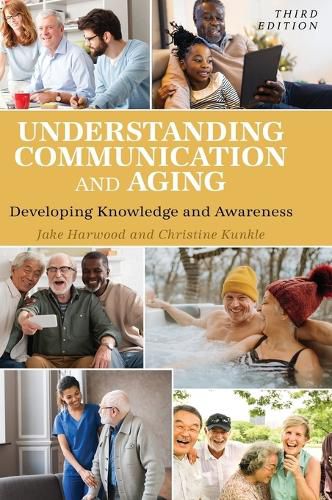Readings Newsletter
Become a Readings Member to make your shopping experience even easier.
Sign in or sign up for free!
You’re not far away from qualifying for FREE standard shipping within Australia
You’ve qualified for FREE standard shipping within Australia
The cart is loading…






This book explores communication in older adulthood, particularly in the areas of interpersonal, intercultural, and mass communication, and includes coverage of communication using new technology. The book synthesizes existing research and builds a case for more positive attitudes towards aging and for the power of communication to shape such attitudes.
A succinct mix of the conceptual and the practical, the authors acknowledge the importance of theory yet also emphasize that communication and aging is inherently an applied field of study. Chapters include profiles of older adults and their significant achievements, literary and artistic depictions of aging, and information boxes that discuss myths about aging and keys to aging successfully. There are also numerous exercises and activities to help engage readers.
While retaining the structure of previous editions, the content of this version has been substantially updated, including the addition of the Communicative Ecology Model of Successful Aging (CEMSA) in Chapter 4. The authors provide enhanced coverage of diversity of race, culture, age, and sexual orientation as well as more diverse ways of "doing aging." There is also more focus in this edition on older adults' romantic lives, spirituality, and their use of media and technology.
Forward thinking in approach and coverage, this book is ideal for courses in communication, gerontology, nursing, and family studies.
$9.00 standard shipping within Australia
FREE standard shipping within Australia for orders over $100.00
Express & International shipping calculated at checkout
This book explores communication in older adulthood, particularly in the areas of interpersonal, intercultural, and mass communication, and includes coverage of communication using new technology. The book synthesizes existing research and builds a case for more positive attitudes towards aging and for the power of communication to shape such attitudes.
A succinct mix of the conceptual and the practical, the authors acknowledge the importance of theory yet also emphasize that communication and aging is inherently an applied field of study. Chapters include profiles of older adults and their significant achievements, literary and artistic depictions of aging, and information boxes that discuss myths about aging and keys to aging successfully. There are also numerous exercises and activities to help engage readers.
While retaining the structure of previous editions, the content of this version has been substantially updated, including the addition of the Communicative Ecology Model of Successful Aging (CEMSA) in Chapter 4. The authors provide enhanced coverage of diversity of race, culture, age, and sexual orientation as well as more diverse ways of "doing aging." There is also more focus in this edition on older adults' romantic lives, spirituality, and their use of media and technology.
Forward thinking in approach and coverage, this book is ideal for courses in communication, gerontology, nursing, and family studies.